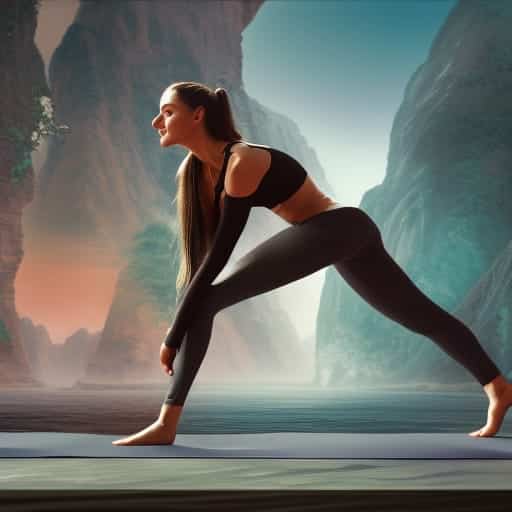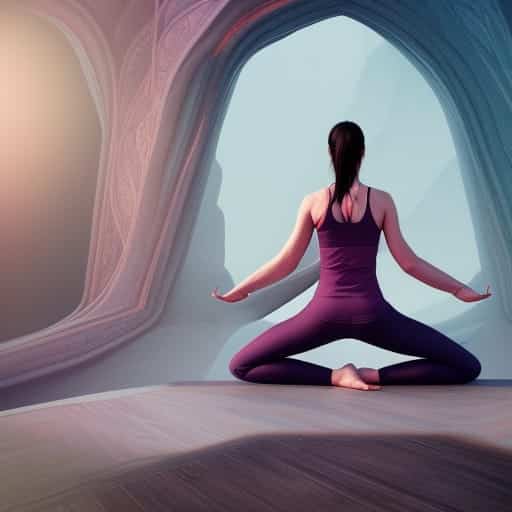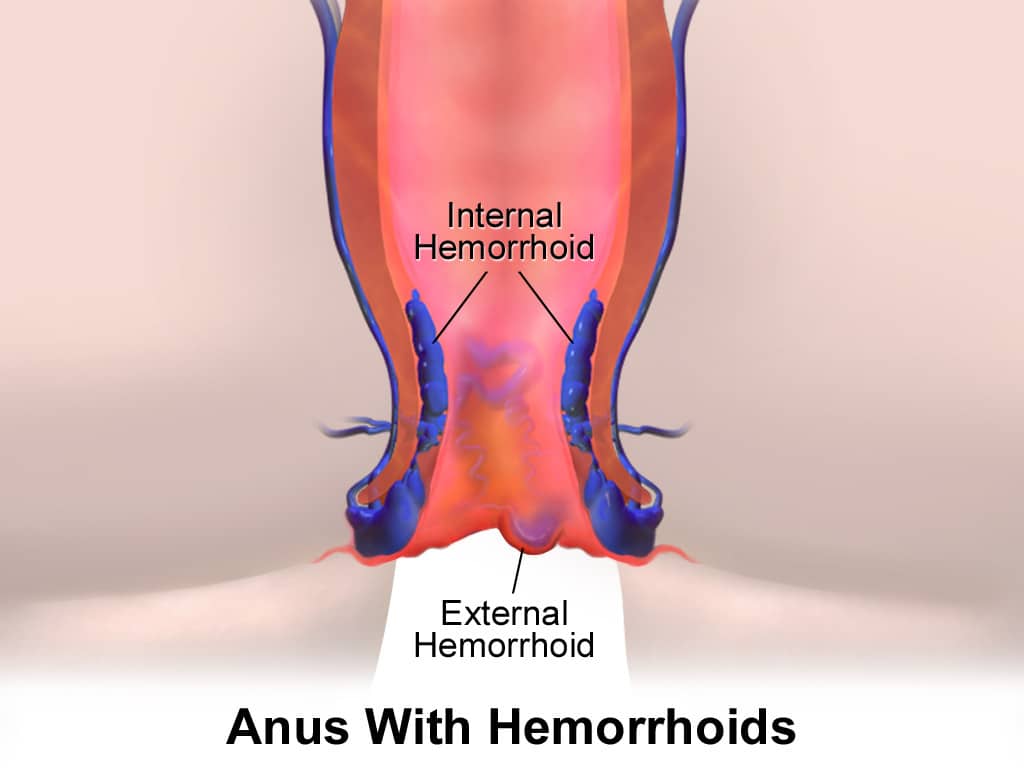Best Exercise for Hemorrhoids
What is the best exercise for hemorrhoids? Quite the different one to ask most people would say…
Suffering from hemorrhoids is an uncomfortable and embarrassing experience for many people. It can be difficult to engage in physical activity, such as exercise, when dealing with the irritation of piles.

However, regular exercise can aid in relieving the symptoms associated with this condition. In this article we will discuss which exercises are best suited to helping those suffering from hemorrhoids feel more comfortable and improve their overall health.
Physical activity helps promote better circulation throughout the body, including blood flow to the area affected by hemorrhoids. Exercise also increases muscle strength and flexibility which can help reduce pressure on the anus caused by straining during bowel movements or other activities that involve bending at the waist.
Finally, it can reduce constipation, a common cause of exacerbating existing piles due to additional strain placed on the anal region.
By selecting appropriate exercises tailored specifically for hemorrhoid sufferers and engaging in them regularly, it is possible to alleviate some of the symptoms associated with this condition while reaping other benefits too; improved cardiovascular fitness, increased mobility and feeling energized after each session.
Read on as we explore how you can use exercise safely and effectively when living with hemorrhoids.
Exercise And Physical Activity for Hemorrhoids
Exercising is an essential part of managing symptoms associated with hemorrhoids. While there are a variety of exercises that can help to reduce the pain and discomfort caused by this condition, Kegel exercises, cardiovascular activities, and aerobics may be especially beneficial, are are considered the best exercise for hemorrhoids.
Kegel exercises involve contracting and releasing the pelvic floor muscles. This type of exercise helps to improve blood flow in the affected area while also strengthening these key muscles to minimize symptoms such as itching or burning sensations.
Cardiovascular activities like riding a bike or jogging can also stimulate blood circulation throughout the body, helping to ease any swelling or inflammation from hemorrhoids.
Additionally, aerobic exercises such as jumping rope or swimming provide further benefits for improving overall health and reducing stress levels which can exacerbate symptoms.
Participating in certain sports activities, however, should be avoided if you have hemorrhoids; horseback riding, heavy lifting, and running on hard surfaces can irritate existing conditions so it's best to avoid them entirely or modify your approach accordingly.
Yoga poses may be beneficial when tailored specifically for dealing with hemorrhoid issues; speak with a qualified instructor who can help you design a routine that works best for you.
Stretching Exercises
Stretching exercises can help reduce or prevent hemorrhoids flare-ups. They also act as a preventive measure against the development of new ones. Stretching works by increasing blood flow to the anal sphincter and counteracting the effects of certain hemorrhoid creams, which can cause constriction in this area.

Stretching is best done after taking a sitz bath with warm water for 10 minutes. This helps relax muscles around the anus and reduces discomfort from inflamed hemorrhoidal tissues.
Popular stretching exercises for people with hemorrhoids include child’s pose, pelvic floor muscle tension, and quadriceps stretches. Begin each exercise slowly and gently; do not rush into them too quickly.
Start by holding each stretch for ten seconds before releasing it; increase time gradually up to one minute when comfortable. Be sure to pay attention to your body throughout these exercises – if any pain arises, stop immediately and speak to your doctor if needed.
Aerobic Exercises
Research shows that 65% of people with hemorrhoids struggle to perform physical activities. Aerobic exercises are an ideal way for them to stay fit and healthy while reducing their symptoms. These exercises strengthen the cardiovascular muscles, improve circulation, and help regulate heart rate–all of which can reduce inflammation in the veins associated with hemorrhoids.
Water aerobics such as swimming laps or slow walking against a current are two examples of low-impact aerobic exercise for those struggling with hemorrhoids.
Brisk walking is another option that helps raise the heart rate without adding strain on the hips and lower back; alternatively, using a stationary bike or elliptical machine at home is also beneficial if access to a pool isn't available.
All these activities should be done regularly as part of a healthy lifestyle to keep up one's fitness level and reduce severity of hemorrhoid symptoms over time.
When starting any kind of new exercise routine, it's important to begin slowly and gradually increase intensity, allowing your body to adjust accordingly so you don't overexert yourself.
Regularly engaging in aerobic activities can provide numerous health benefits such as improved mood, better sleep quality, increased energy levels, and more efficient digestion – all helping individuals manage their discomfort from hemorrhoids more effectively.
Strengthening Exercises
Strengthening exercises can be beneficial in relieving symptoms of external hemorrhoids. Exercises that target the anal and pelvic muscles are recommended to help alleviate pain, itching, burning, and bleeding associated with external hemorrhoids.

Home remedies such as a warm bath or light exercise may also provide some relief from symptoms. Here is an overview of the type of exercise that can be done at home to strengthen those muscles:
– Anal squeezes: This type of exercise involves contracting and releasing your anal sphincter muscle multiple times in succession. Doing this several times a day helps tighten and strengthen the surrounding area which can reduce discomfort caused by external hemorrhoids.
– Pelvic floor exercises: These involve tightening and relaxing your pelvic floor muscles multiple times in succession. By doing so, you are strengthening these muscles which will help support your rectum and reduce strain when passing stools.
– Abdominal contractions: This type of exercise involves squeezing your abdominal muscles together for five seconds each time and then relaxing them for 10 seconds before repeating again. Doing this regularly can help build stronger core muscles which will provide additional support for the rectal area when it comes to straining during bowel movements or lifting heavy weights.
In addition to performing strengthening exercises on a regular basis, one should avoid activities that would put undue pressure on the anal area such as certain types of sports or repetitive motions like running or jumping jacks.
Regularly practicing these strengthening exercises along with other lifestyle modifications may lead to improved overall health while providing symptom relief from external hemorrhoids. Transitioning into pelvic floor exercises provides further opportunity for relieving symptoms related to external hemorrhoid flare ups.
Pelvic Floor Exercises
It is widely accepted that pelvic floor exercises can be beneficial for people suffering from hemorrhoids. The muscles in the pelvic area are called the pelvic floor muscles and they provide support to many structures including supportive tissue. Strengthening these muscle groups through contraction or tension helps alleviate symptoms of hemorrhoid flare-ups.
Pelvic floor exercises involve contracting, releasing, and strengthening the pelvic floor muscles to improve overall control over them. This type of exercise can also help enhance bladder and bowel movements as well as reduce urinary incontinence by teaching users how to properly contract their pelvic floor muscles when needed.
Additionally, some physicians recommend using rubber band ligation in combination with a Valsalva manoeuvre—a technique used during physical exertion which involves bearing down against closed glottis (throat) while exhaling—for increased effectiveness of the treatment.
Overall, regular practice of pelvic floor exercises is an effective way to strengthen the muscles supporting your entire pelvic area and reduce any uncomfortable symptoms associated with hemorrhoids.
Through improved muscle control and strength, there is potential for reduced pain, inflammation, bleeding frequency and recurrence rate. Furthermore, engaging in such activities may even lead to improved sexual functioning due to stronger pelvic floor muscles improving sensation during intercourse.
Yoga Poses for Relief from Hemorrhoids
Practicing yoga poses can help alleviate the symptoms of hemorrhoids and even prevent their recurrence. Yoga is a low-impact exercise that helps to increase flexibility, reduce stress, and improve circulation while strengthening the lower back muscles. It also encourages regular bowel function and healthy blood flow in the rectal area which may help with internal hemorrhoid issues.

Here are some beneficial yoga poses for relief from hemorrhoid pain:
* Child's Pose: This pose provides gentle relaxation to both the body and mind while reducing inflammation in the rectal area.
* Bridge Pose: This posture strengthens the glutes and hamstrings while improving circulation around the anus.
* Warrior I & II Poses: These postures strengthen and stretch your legs, core, shoulders, arms, hips, and chest muscles all at once helping you become more flexible.
* Bow Pose: This pose stretches out tight abdominal muscles as well as relaxes them by releasing tension in the pelvic region thus aiding in relieving painful external hemorrhoids.
* Corpse Pose: Also known as Savasana this pose increases relaxation throughout your entire body allowing it to heal faster therefore decreasing any risk of reoccurring hemorrhoids or other related conditions.
Yoga not only helps relieve painful symptoms associated with hemorrhoids, but it also serves as an excellent tool for prevention due to its ability to improve overall physical health when practiced regularly. As such, incorporating yoga into one’s lifestyle can be highly beneficial for managing existing problems caused by hemorrhoids as well as preventing future ones from occurring again.
Lifestyle Tips to Prevent Recurrence of Hemorrhoids
It may seem counterintuitive, but lifestyle changes can help prevent hemorrhoids from returning. It's all about developing better habits and making sure your anal area remains healthy.
The first step is to strengthen the muscle tone in your lower rectum. Deep breathing exercises, such as yoga or Pilates, are an excellent way to do this. Other beneficial activities include moderate physical activity like walking or swimming for at least 30 minutes a day and eating a healthy diet that includes plenty of fiber.
If necessary, you can also take a fiber supplement to ensure your body receives enough dietary fiber each day.
Another thing to keep in mind is wearing breathable clothing that won't put pressure on your anus and using witch hazel when cleaning after going to the bathroom to help soothe any irritation caused by wipes or toilet paper.
These simple steps can make it easier to maintain good health while avoiding flare-ups of hemorrhoid symptoms.
Things to consider
Physical activity is an important part of managing hemorrhoids. Regular exercise can help reduce symptoms and prevent recurrence. Stretching, aerobic, strengthening, and pelvic floor exercises are all beneficial for relieving pain associated with hemorrhoids.

Yoga poses like pigeon pose and child’s pose can also be helpful in alleviating discomfort from the condition. Additionally, lifestyle changes such as increasing fiber intake and drinking plenty of fluids will go a long way toward avoiding flare-ups of your hemorrhoid symptoms.
As they say: “An ounce of prevention is worth a pound of cure.” Taking preventive measures to avoid straining during bowel movements and exercising regularly will help you stay ahead of your hemorrhoidal symptoms before they become a more pressing issue down the line.
Remember that taking care of your body now not only helps in the present moment but it saves you time, money, and energy in the future as well.
Making small lifestyle changes such as increasing fiber intake, drinking enough water, stretching regularly and engaging in regular activities such as walking can make a world of difference when it comes to maintaining good health overall – especially where hemorrhoids are concerned!
FAQs
What is the best sitting position for hemorrhoids?
The best sitting position for hemorrhoids is with a straight back and your feet flat on the ground. Avoid sitting for long periods of time and take breaks to walk around and stretch your legs. Use a cushion or rolled towel to relieve pressure on the anal canal and avoid worsening hemorrhoid symptoms.
What exercises should I avoid with hemorrhoids?
High-impact exercises and weight lifting should be avoided with hemorrhoids, as they can put pressure on the blood vessels in the anal muscles and worsen rectal bleeding. Instead, focus on low-impact exercises such as walking, swimming, and cycling, which can improve cardiovascular health and promote regular bowel movements.
What are some female exercises for hemorrhoids?
Kegel exercises are a great option for women with hemorrhoids, as they can help strengthen the muscles in the lower abdomen and inner thighs. Other exercises such as yoga and Pilates can also be beneficial, as they promote relaxation and improve blood flow to internal organs.
Can Kegel exercises help with hemorrhoids?
Yes, Kegel exercises can help strengthen the anal muscles and improve blood flow to the rectal area, reducing the risk of developing internal hemorrhoids. Consult with a healthcare professional to determine the best type and frequency of Kegel exercises for your individual needs.
Is walking good for hemorrhoids?
Yes, walking is one of if not best exercise for hemorrhoids in some peoples eyes, as it improves blood flow and promotes regular bowel movements without putting undue stress on the anal canal. Be sure to wear comfortable, loose-fitting clothing and consider using a stool softener or counter hemorrhoid cream if necessary.


